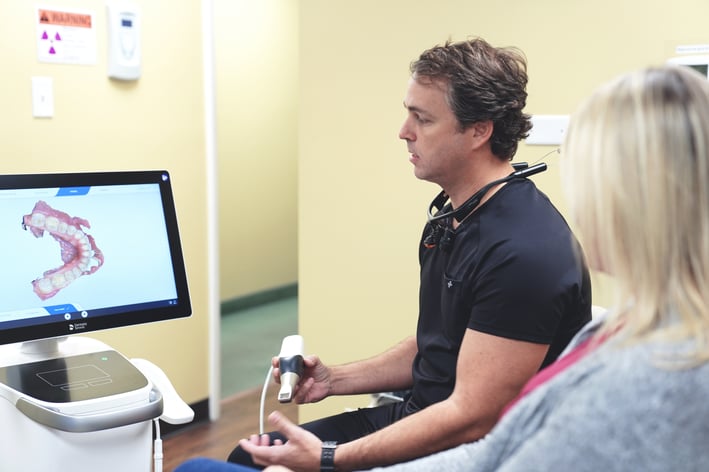Why attachments are important in dental insurance claims
.jpg)

When you send a dental claim off to the insurance company, you send it with confidence that it will pay, not be denied. So, when it is denied, you can’t help but feel frustrated and wonder, “What went wrong with that insurance claim?” A great first step is to check what attachments are needed for dental claims.
Chances are, if the patient and insurance information is all correct, maybe the claim just needed more information and you forgot to attach specific supporting documentation to your claim.
At Dental Cashflow Solutions, we see claim denials due to a lack of supporting documentation often enough that we decided to address it here. As a remote billing company, we always advise the in-house team to “over-explain” themselves when it comes to attachments and narratives, because the more information you provide to insurance companies, the less likely they are to deny reimbursement.
In this article, you will learn how specific supporting documentation is crucial to getting your dental insurance claims paid. This knowledge will help your dental team reduce the denials and collect more revenue from your billing process - whether you’re outsourcing dental billing or doing it in-house.
What is supporting documentation on a dental insurance claim?
Supporting documentation is the evidence attached to an insurance claim, which tells the insurance company why the dental procedure was necessary. It’s proof that services were needed.
Supporting documentation can come in the form of:
- X-rays
- Periapical (PA)
- Panoramic (Pano)
- Full Mouth X-ray (FMX)
- Intraoral photos
- Clinical notes (examples below)
- Charting
- Narratives
Certain procedures require different types of documentation, as well as coding. Here are a few examples of procedures that require supporting documentation, including clinical notes examples:
| Procedure | Attachment | Perio Chart | Narrative |
|
D2740; D2750; D2790 (Crowns) |
PA (Initial) |
No |
Yes. Initial or Replacement. If replacement, give the initial placement date of the existing crown (the one they are replacing). If the chart notes do not have the initial placement date, contact the office for an estimate. Example: Replacement crown. Original crown placed June 2001. Recurrent decay due to open margins causing pain and sensitivity. Standard of care is to remove old crown and caries, then replace a new crown to restore the integrity and functionality of the tooth |
|
D2950 (Build-up) |
PA (Initial) |
No |
Typically, no. The only time a build-up needs a narrative is for Cigna and they need the seat date of the crown (when it was cemented). |
|
D3310; D3320; D3330 (Root Canals) |
PA (Initial) PA (Post RCT) |
No |
|
|
D4341; D4342 (Scaling and Root Planing) |
FMX or Pano |
Yes |
For the D4342, the teeth numbers need to be in the narrative. Teeth numbers listed with a 5mm or greater in the patient’s perio chart need to be noted Example: D4342 Teeth # 3, 5, & 7 due to localized horizontal/vertical bone loss |
|
D4910 (Perio Maint.) |
No |
Yes |
Yes, for new insurance plans only. The narrative needs to state what SRP was completed (ADA codes) and when (date). Examplehttps://www.dentalclaimsupport.com/blog/why-attachments-dental-insurance-claims-important: Patient had D4341 on UR and D4341 on LR June 3, 2014. Patient had D4341 UL and D4341 on LL on June 4, 2014. |
|
D5211; D5212; D5110; D5140; D5120; D5130 (Dentures, partial dentures) |
FMX or Pano |
No |
Yes, the narrative needs to state if initial or replacement, the teeth being replaced in a partial denture, other missing teeth in the arch for a partial denture and the extraction dates. Ex: Initial Placement of denture. Teeth number 4,8, and 10 extracted June 19, 2017. Other missing teeth: #11. Ex: Replacement of denture. Initially placed August 2002. Old denture is broken and non-repairable |
|
D6740, D6245 (Bridge) |
FMX or Pan |
No |
Yes, the narrative needs to state if initial or replacement, the extraction date for the pontic (the tooth with the code D6245), and other missing teeth in the arch Example: Initial placement of bridge. Tooth #9 extracted on June 19, 2017. No other missing teeth in arch. Example: Replacement of existing bridge. Bridge initially placed July 1996. Old bridge is ill-fitting with open margins and recurrent decay and is non-repairable. |
|
D6010, D6057, D6058 (Implants) |
FMX or Pan Or Pre/Post PA |
No |
Yes, the narrative needs state extraction date of the tooth being implanted |
|
D7210 (Surgical Extractions) |
PA of tooth Pano |
No |
Yes, see example Example: Decay compromising integrity and functionality of tooth #29. Extraction of tooth is standard of care. Example: Tooth #29 non-restorable due to extent of fracture/missing tooth structure. Extraction needed to alleviate patient pain and sensitivity |
|
D8090 (Ortho) |
FMX or Pan |
No |
Yes, the narrative needs to state initial banding fee, length of treatment, and patient down payment Example: Initial Banding Fee: $6,000 Length of treatment: 12 months Patient Payment: $2,500 |
These procedures and their specific documentation is a lot to keep up with, and it is common for dental teams to forget to add all of the details.
Here’s a simple chart to help you quickly check if attachments are necessary:
How do you know when to include attachments on your dental claim?
| Service Type | Common Procedures | Need Attachments? |
| Preventative | Exams, cleanings, radiographs, fluoride | No |
| Basic | Composites, root canals, extractions, periodontal services | Maybe |
| Major | Crowns, build-ups, bridges, implants, dentures, partials | Yes |
What happens when supporting documentation or attachments are missing on an insurance claim?
Short answer: your insurance claim is more likely to be denied.
Supporting documentation is key for a clean claim. When we say “clean claim,” we mean a claim that has everything it needs to be reimbursed by insurance: accurate patient information, proper coding, and of course, supporting documentation.
Insurance companies look for any reason to deny your claims or downgrade your procedures for lower reimbursement, so with your due diligence, you won’t be giving them a reason.
If this is so obvious, why do these claim details get forgotten?
Sometimes claim details are forgotten just because the dental team gets caught up in the routine of the day, especially if they are busy, and neglect to attach certain x-rays or intraoral photos.
Or other times, they don’t realize that an x-ray is insufficient and need to attach an intraoral photo to show why dental services were needed. Sometimes an x-ray doesn’t show what the naked eye can see.
Then, of course, there are some patients who cannot handle having the camera mechanism in their mouth. This specifically, is something you should add to your claim in the clinical notes.
The more details are missing on your claim, the more likely it will be denied. Specifically, consider taking intraoral photos of the original condition prior to treatment.
This is important for three reasons:
- It provides evidence of medical necessity.
- It documents your clinical findings before any work is done. Showing the original condition is essential in case you need to send in an appeal.
- It helps you educate your patients so they can see and accept the need for treatment.
You can always still fight insurance on this, but it does get difficult when you do not have effective documentation.

You should also always include documentation on claims for legal reasons
Obviously, your practice getting paid is important. But including properly supporting documentation on your claims, and keeping accurate records of your patients’ health on file can also keep your practice covered legally.
For example, let’s say you treat the patient, but you don't have documentation to support what you did, and then the insurance denies the claim. Then the patient is notified by their insurance that the claim was denied because they “didn’t need the procedure.”
Now the patient, who doesn’t know how insurance denials work, might be alarmed that they paid for unnecessary dental work.
We’ve seen this scenario play out, and it can lead to an ugly situation. If you always have sufficient documentation, you should have no reason to worry. It’s direct proof that can help prevent disputes from escalating, or protect you if they do.
Avoid denials and collect everything you’ve earned from insurance companies
As we mentioned, insurance will do anything they can to deny your claims. It’s important that you always remember to provide ample documentation in images and in the clinical notes, making sure no stone is left unturned as to why the procedure was necessary.
Dental Cashflow Solutions can always advise your in-house team with other tips to avoid insurance claim denials. And of course, our customers don’t waste time appealing your denied claims because that’s included when you outsource dental billing with us.
To learn more reasons your claims could be getting repeatedly denied by insurance, read our article, “10 reasons your dental insurance claims are being denied” in order to learn to avoid them and collect more.
Related Posts
Dental revenue resources from Dental Claim Support


